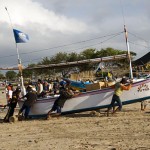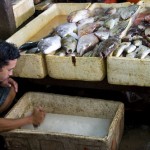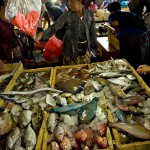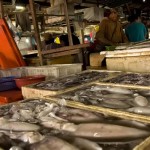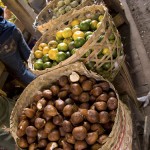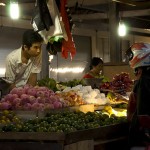Bumbu Bali : Restaurant and Cooking School
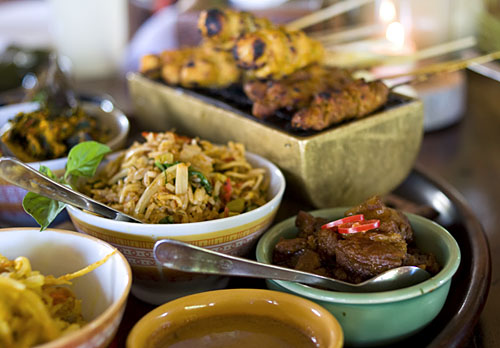
I wasn’t intending to write much about our recent trip to Bali, but I did want to mention one of the activities we had the opportunity to take part in, which I think is well worth sharing. This is for anyone who is planning a visit to Bali, and who might be looking for something to do, inbetween the many hours spent lounging on the beach and sight-seeing.
So after you’ve had your tenth watermelon cocktail, chased down with handfuls of emping or sate, you might want to consider how you are going to replicate this experience once you return to reality. Signing up for a Balinese cooking class in Nusa Dua (but preferably not on the same day as those ten cocktails) is what we opted to do, in the hope of gaining some insights into Balinese food.

While it might seem odd for a Balinese class to be run by a Swiss born chef, Heinz von Holzen (who is classically trained) has lived in Bali for many years and is well versed in Balinese cooking. In fact, he has been on a quest to accurately document all the traditional Balinese recipes that have until now been passed down from generation to generation via word of mouth. Not only can you be assured that his recipes are authentic (and incredibly delicious), but as a disciple of Harold McGee, he also takes a scientific approach to what he does in the kitchen.
During the class, he started by introducing us to ingredients typically found in a Balinese kitchen – some of which were a revelation to me. I didn’t realise for example, that fresh nutmeg could be easily sliced with a knife (as opposed to grating it), or that fresh large red chillis were as mild as a red capsicum, or that there were two different types of snakeskin fruit (salat) – one of better quality than the other.
Another revelation was the way in which he broke down the concept of cooking Balinese style, into a series of spice pastes (bumbu) which form the basis of any Balinese meal. These pastes, for seafood, poultry, beef or vegetables, can be prepared in bulk well in advance, and even frozen into portioned amounts, ready to be used when required. In essence, this means that whipping up a meal of this sort, can be easier and faster than you would expect.
Back home, I’ve been cooking spice stuffed chicken (ayam bertutu) and sweet soy braised pork (be celeng base manis). Combine these with a salad (pecelan) tossed through with an easy blend-everything-together/no-cooking-required peanut sauce and some steamed rice (nasi putih), and I’m back in Bali again, hair damp against my neck, feeling the warm wind drift between bare legs. We are walking down a road, Bluebird taxis beeping as they zip past, when one woman calls out quite improbably, “Massage? Haircut? ..Happy ending?”
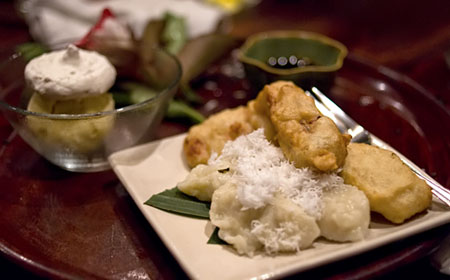
(Pictured : Deep-fried bananas (pisang goreng) which we were shown how to make in class. Heinz recommends deep frying these at a low starting temperature (just the way his wife traditionally does), reasoning that this will mean a less drastic drop in temperature when items are placed in the fryer. Being able to maintain a constant temperature while deep frying, results in a product which absorbs less of the frying medium. These pisang goreng were crispy and so very delicious that we had to order them again when we visited his restaurant a few nights later. Note that it’s more traditional to enjoy pisang goreng with palm sugar syrup. The accompanying ice-cream which we requested, is just one of those Westernised habits I don’t think I’ll ever be able to relinquish.)
Bumbu Bali Restaurant and Cooking School
Jalan Pratama, Tanjung Benoa,
P.O.Box 132 Nusa Dua 80363
Bali – Indonesia
Tags: Bali 2009


